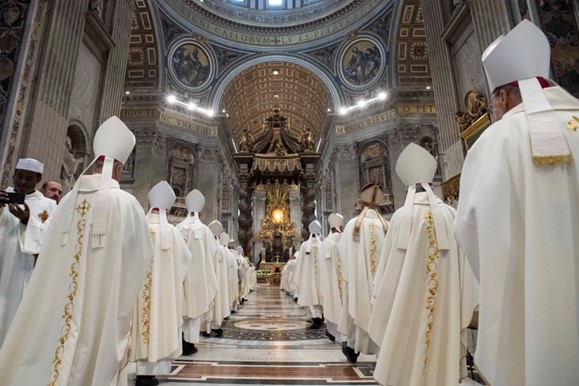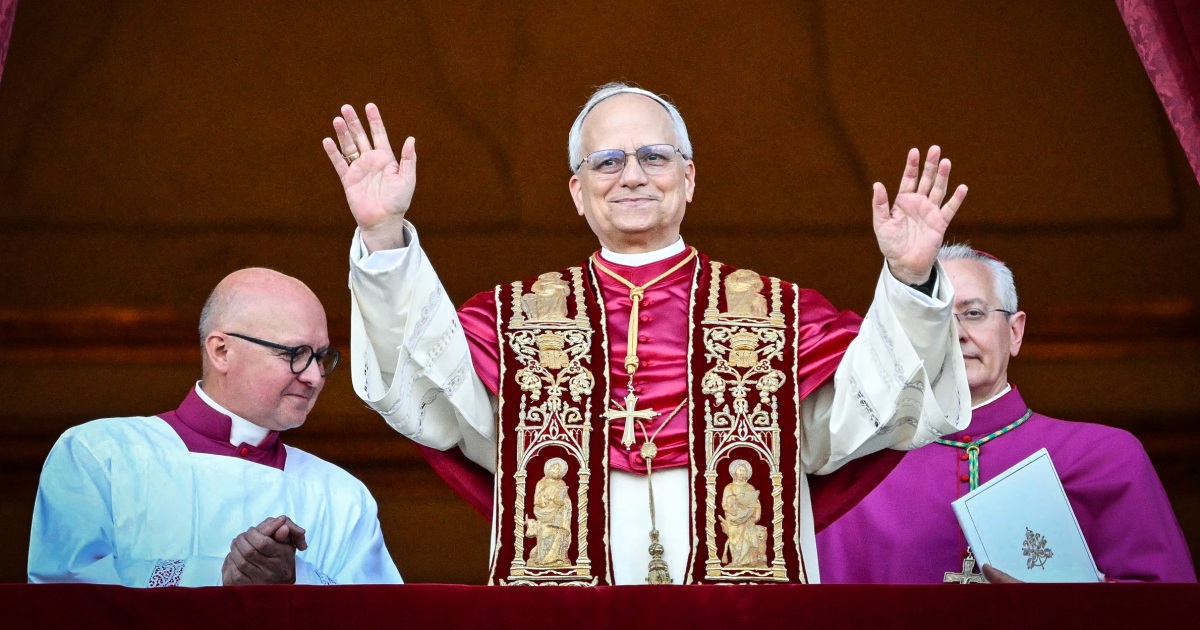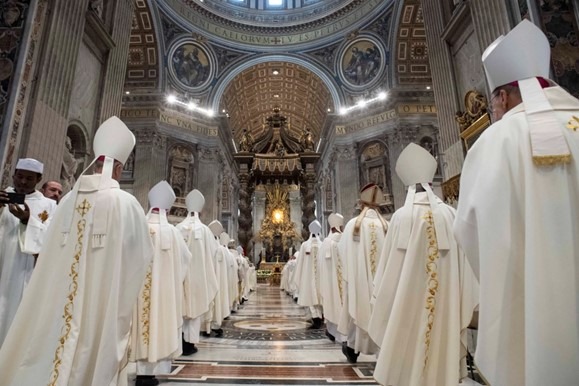In today’s society, where public figures and their actions are constantly under scrutiny, religious leaders are increasingly facing challenges that test both their personal integrity and the faith of the communities they represent. A recent image captures this tension, where prominent figures within the Catholic Church, including two cardinals, are seen alongside a woman whose presence symbolizes a shift in societal norms and values. This interaction invites us to reflect on how religious institutions evolve in response to modern challenges.
The Role of Religious Leaders in the Modern Era

Religious leaders, particularly those within the Catholic Church, are often seen as pillars of moral authority. However, their role in today’s world has become more complex as society moves toward greater openness and discussion of ethics and morality. The Catholic Church, long associated with tradition, has come under increasing pressure to evolve alongside contemporary issues. This image, which juxtaposes the traditional figures of the cardinals with the more progressive representation of the woman, highlights this tension. The woman in the image represents modern societal challenges, while the cardinals embody the Church’s historical and doctrinal authority. The combination of these figures suggests a conflict between the old and the new, a conversation that is ongoing in many aspects of society today.
The Changing Expectations of Religious Figures

As society becomes more diverse in its views on gender, morality, and ethics, religious figures are tasked with navigating these evolving expectations. The image captures this shift, portraying the cardinals in a moment of humility, seeking forgiveness for past actions. This reflects a broader movement within religious institutions to address past scandals and restore trust with the faithful. The cardinal’s role is no longer simply to lead but to listen, reflect, and engage with the issues that matter to their congregation.
Forgiveness: A Pillar of Christian Teaching

Forgiveness is a core concept in Christian theology. It is not just about absolving personal transgressions, but about creating a path for reconciliation and healing. The cardinals’ actions, seeking forgiveness, may be symbolic of a larger effort within the Catholic Church to repair its relationship with its followers. In recent years, the Church has faced various controversies, some of which have shaken the faith of millions. The call for forgiveness, therefore, is not just theological but also a social necessity. It reflects a desire for redemption not only from personal failings but from the institutional crises that have undermined the Church’s moral authority.
The Dual Role of Forgiveness: Personal and Institutional Reconciliation
In this context, forgiveness represents a dual process. On one hand, it is deeply personal—an individual’s acknowledgment of mistakes and the desire to move forward. On the other hand, it is institutional—an effort by the Church to address its internal issues and reestablish trust with its community. The portrayal of the cardinals in the image conveys both aspects, as they seem to be grappling with their own roles in an institution that has been criticized for its handling of various scandals.
The Generational Divide: Tradition vs. Modernity

The contrast between the cardinals and the woman in the image also speaks to a generational divide in the way faith is practiced and understood. For younger generations, the traditional structures of the Church may seem disconnected from their lived experiences. Many people today, particularly younger women, are looking for authenticity and inclusivity in their religious practices. The woman in the image symbolizes this search for a more open, transparent, and modern approach to faith, one that is less confined by traditional doctrines.
This generational shift challenges the Church’s ability to remain relevant in a world that is changing rapidly. Younger people may find themselves at odds with the doctrines and practices that have been in place for centuries. They may feel that the Church’s teachings are too rigid to address the complexities of their own lives and experiences. In this light, the image of the woman can be seen as a symbol of reform—a call for change that challenges old norms while advocating for a faith that is inclusive and adaptable.
The Role of Women in Religious Institutions
Women, in particular, have increasingly voiced their desire for a more equal role within religious institutions. Historically, the Catholic Church has been criticized for its treatment of women, both within the Church hierarchy and in the broader context of religious teachings. The portrayal of a confident woman standing alongside the cardinals suggests a potential shift in how women are viewed in the Church, highlighting a call for greater representation and respect for women’s voices in religious matters.
The Tension Between Tradition and Progress
As the Church continues to grapple with its role in modern society, the tension between tradition and progress becomes ever more apparent. The cardinals in the image represent the deep-rooted traditions of the Church, while the woman stands for the progressive movement that seeks change. This juxtaposition brings to light the ongoing struggle between preserving historical values and embracing new ideas that reflect the diverse needs and values of today’s society.
Navigating Controversy and Reform
In response to these challenges, many religious institutions, including the Catholic Church, are beginning to engage in self-reflection and reform. This includes addressing controversial topics like gender equality, the Church’s stance on sexuality, and its handling of past scandals. The Church’s efforts to seek forgiveness and embrace reform are part of a larger movement within many religious communities to reconcile their teachings with the realities of modern life.
At the same time, there are many within the Church who resist change, arguing that the fundamental teachings of Christianity must remain intact. This divide has led to heated debates within the Church and broader society about what constitutes authentic faith in the modern world.
The Path Forward: Reconciliation and Healing
As the Church seeks to move forward, the act of seeking forgiveness becomes central to its mission. Forgiveness is not just about reconciling with the public; it is also about internal healing. For the Church to continue to play a meaningful role in people’s lives, it must demonstrate a willingness to evolve and address the challenges of modernity without compromising its core principles. This process of transformation requires both humility and strength—a balance between maintaining doctrinal integrity and embracing the changes necessary to meet the needs of contemporary society.
In many ways, the image of the woman and the cardinals captures the heart of this challenge. The woman represents the demand for change and the desire for inclusivity and authenticity, while the cardinals symbolize the institution’s efforts to adapt without losing its foundation. Their interaction is a metaphor for the complex dialogue between tradition and progress—one that is ongoing within the Church and many other institutions across the world.
Conclusion: A Call for Change and Reconciliation
The portrayal of the woman and the cardinals is a powerful symbol of the ongoing struggle between tradition and progress within religious institutions. As society becomes more diverse and inclusive, religious figures are faced with the challenge of maintaining their values while also embracing the changes that are necessary to remain relevant. Forgiveness, as depicted in the image, is both a personal and institutional journey—one that requires humility, reflection, and a commitment to reconciliation.
As the Church continues to navigate the complexities of modern life, it must seek to balance the preservation of its teachings with the need for reform. Only by doing so can it continue to serve as a meaningful and compassionate institution for people of all backgrounds and beliefs.









